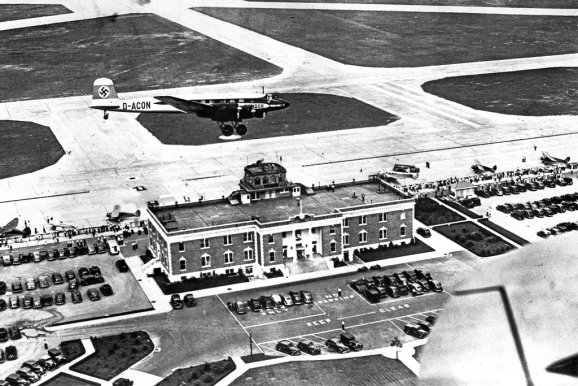
10–11 August 1938: Under the command of Deutsche Luft Hansa Kapitän Alfred Henke, Brandenburg, a Focke-Wulf Fw 200 S-1 Condor, D-ACON, departed Flugplatz Berlin-Staaken, 6 kilometers west of Spandau, at about 7:30 p.m., on Wednesday, 10 August 1938.
The other members of the crew were Hauptmann Rudolf Freiherr von Moreau, of the Luftwaffe, co-pilot; Paul Dierberg, flight engineer; and Walter Kober, radio operator. There were no passengers on board.
Brandenburg flew a Great Circle course across the North Atlantic Ocean and landed at Floyd Bennett Field, Brooklyn, New York at 1:50 p.m., local time, Thursday, 11 August. The distance flown was 6371.302 kilometers (3,958.944 miles). The total duration of the flight was 24 hours, 56 minutes, 12 seconds. The Condor averaged 255.499 kilometers per hour (158.760 miles per hour).
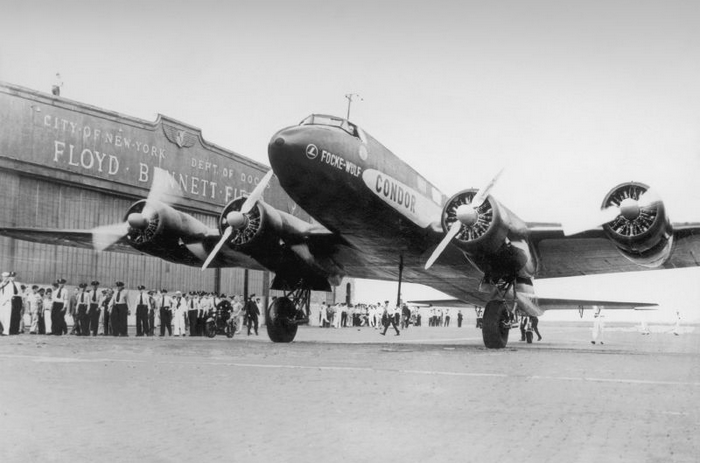
Although they encountered severe weather, the flight was relatively uneventful. Upon landing, it was discovered that the prototype airliner had suffered some damage to an engine cowling and that one engine lubricating oil tube had cracked, causing a leak.
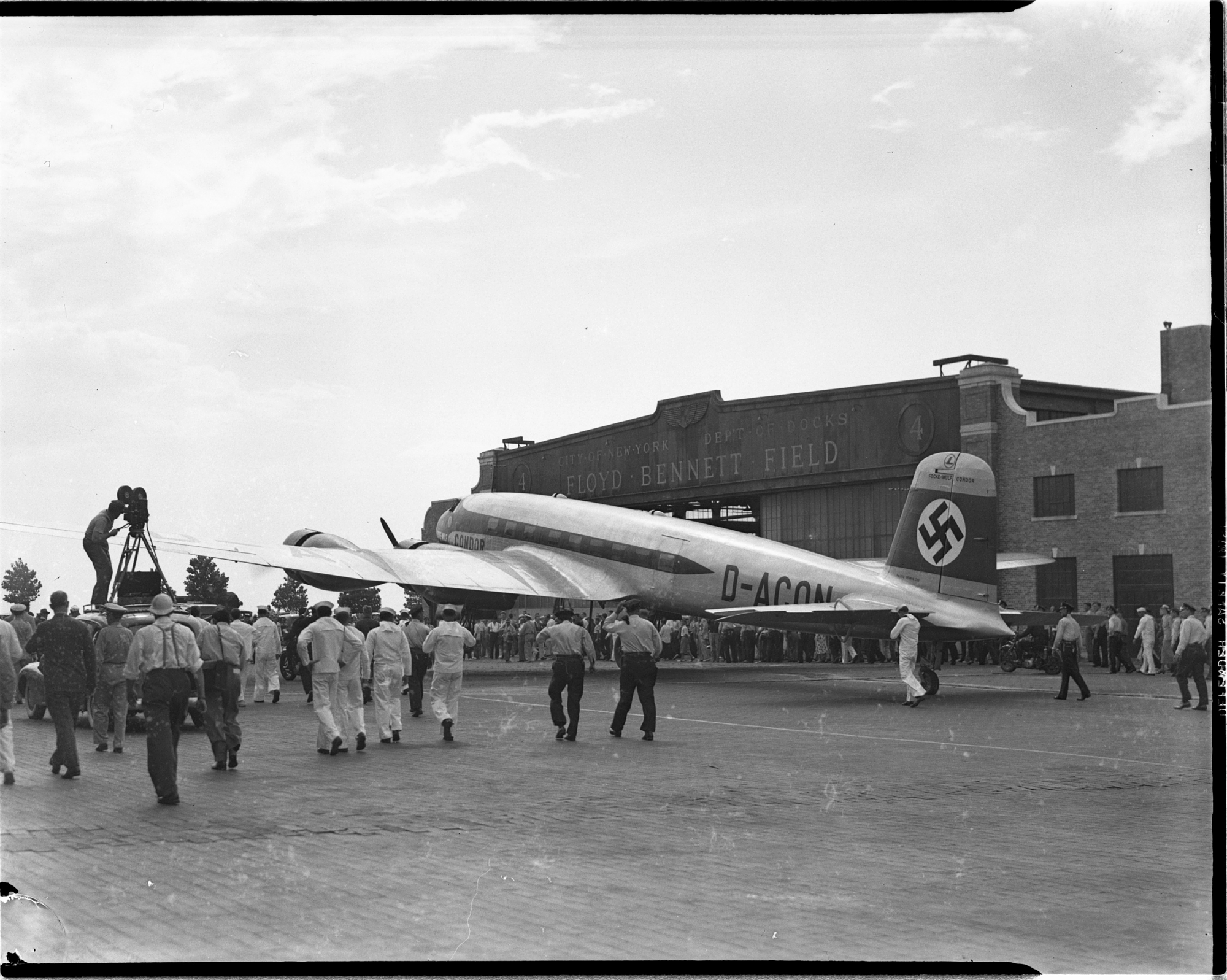
The problems were repaired while Hauptman von Moreau made an unexplained trip to Washington, D.C. Brandenburg was ready for a return flight to Germany the following day.
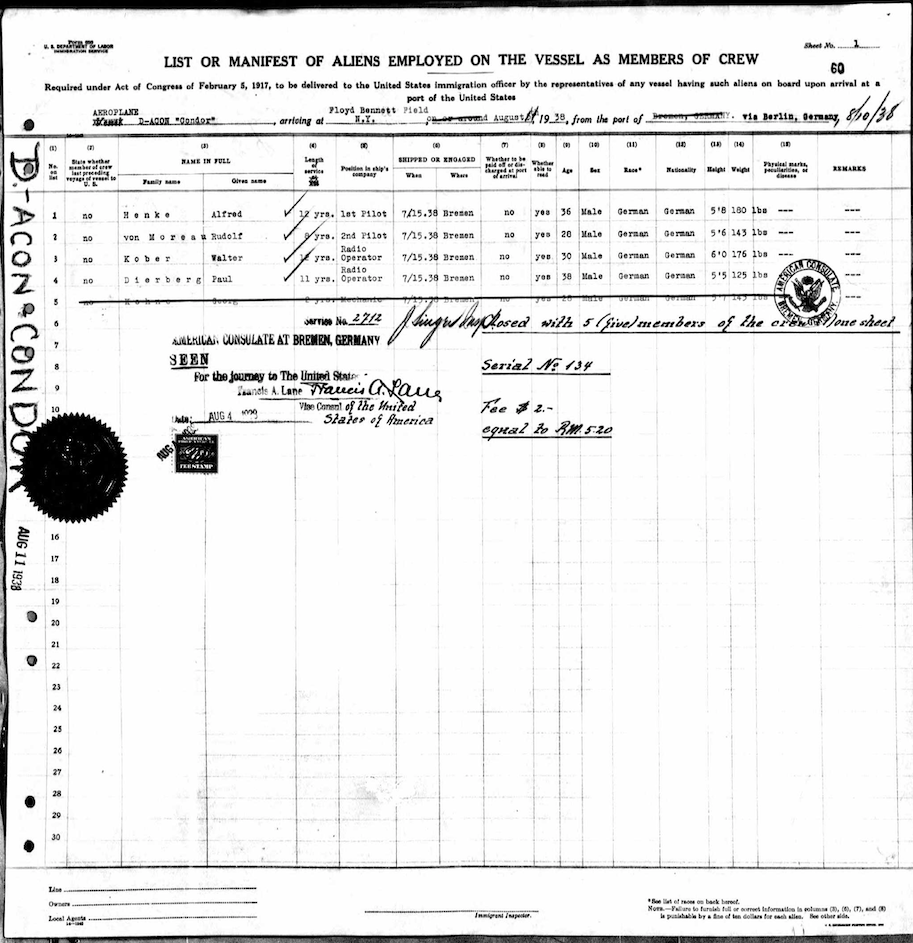
Taking off from Floyd Bennett Field before 9:30 a.m., on Saturday, 13 August, Brandenburg was flown to Flughafen Berlin-Templehof. With more favorable winds on the eastbound flight, the 6,392 kilometer distance (3,972 miles) was covered in 19 hours, 56 minutes, with an average speed of 321 kilometers per hour (199 miles per hour).
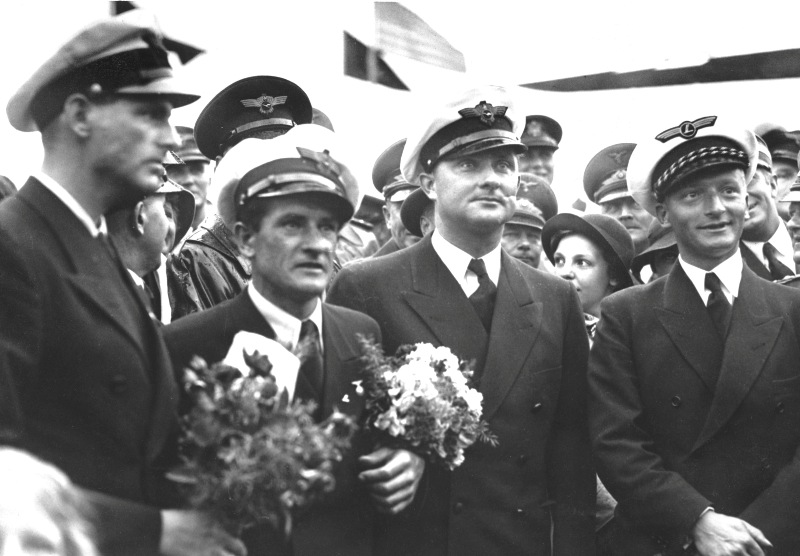
Following their return to Germany, Captain Henke (who was also an Oberleutnant in the Luftwaffe) and Hauptman von Moreau were congratulated by Adolph Hitler. In photographs, Henke is easily identifiable by the prominent “dueling scar” on the left side of his face.
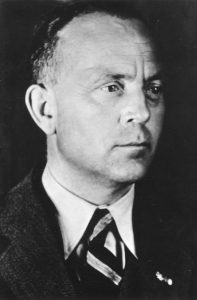
D-ACON was the prototype Condor, designated Fw 200 V1, Werk-Nr. 2000. It had first flown at Neulander Feld, site of the Focke-Wulf plant in Bremen, 27 July 1937. The test pilot was Kurt Waldemar Tank, an aeronautical engineer and the airplane’s designer.
Tank had proposed the airplane to Deutsche Luft Hansa as a long-range commercial transport for routes from Europe to South America. While British and American airlines were using large four-engine flying boats for transoceanic flight, their heavy weight and aerodynamic drag reduced the practical passenger and cargo loadings. A lighter-weight, streamlined land plane would be faster and could carry more passengers, increasing its desirability and practicality. Also, while the flying boats had to make an emergency water landing if one engine failed during the flight, the Focke-Wulf Condor was designed to be able to remain airborne with just two engines.
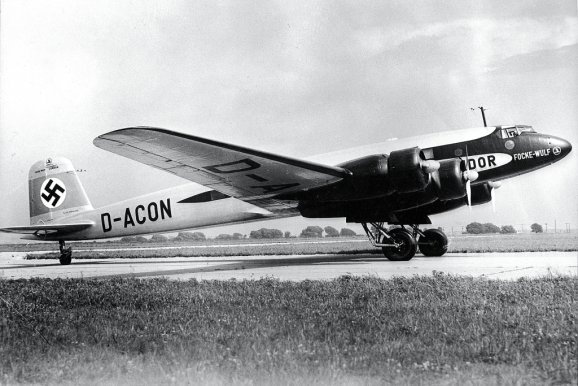
The Fw 200 V1 was an all-metal low-wing monoplane powered by four engines, with retractable landing gear. It had a flight crew of four, and was designed to carry a maximum of 26 passengers. It was 78 feet, 0 inches (27.774 meters) long with a wingspan of 108 feet, 0 inches (32.918 meters) and overall height of 20 feet, 0 inches (6.096 meters). The airliner had an empty weight of 24,030 pounds (10,900 kilograms) and gross weight of 37,479 pounds (17,000 kilograms). This increased to 39,683 pounds (18,000 kilograms) after modification to the Fw 200 S-1 configuration.
As originally built, the prototype Condor was powered by four air-cooled, supercharged 1,690.537-cubic-inch-displacement (27.703 liters) Pratt & Whitney Hornet S1E-G single-row 9-cylinder radial engines with a compression ratio of 6.5:1 and gear reduction ratio of 3:2. The S1E-G was rated at 750 horsepower at 2,250 r.p.m. to 7,000 feet (2,134 meters), and 875 horsepower at 2,300 r.p.m. for takeoff. It was 4 feet, 1.38 inches (1.254 meters) in diameter, 4 feet, 6.44 inches (1.383 meters) long, and weighed 1,064 pounds (483 kilograms).
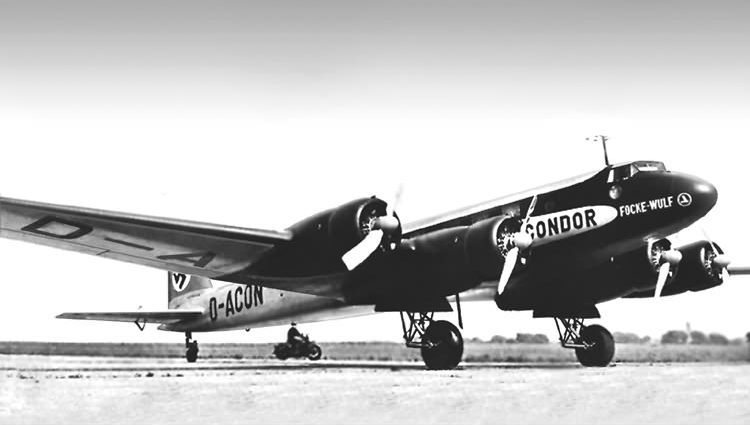
Brandenburg‘s Pratt & Whitney engines were later replaced by Bayerische Motorenwerke AG BMW 132 L engines. BMW had been producing licensed variants of the Pratt & Whitney Hornet since 1933, and had incorporated their own developments during that time.
The Fw 200 V1 had a maximum speed of 233 miles per hour (375 kilometers per hour) at Sea Level. Its cruising speed was 205 miles per hour (330 kilometers per hour) at 10,000 feet (3,048 meters). The airliner’s service ceiling was 20,000 feet (6,096 meters). It could maintain level flight at 13,000 feet (3,962 meters) with 3 engines, and 10,000 feet (3,048 meters) with just two engines running. Its range at cruise speed with a 7,000 pound (3,175 kilogram) payload was 775 miles (1,247 kilometers).
For the Berlin-to-New York flight, the Fw 200’s fuel capacity was increased to 2,400 gallons (9,084 liters).
D-ACON made a series of long distance flights to demonstrate its potential. On 20 November 1938, Brandenburg flew from Berlin to Hanoi in French Indo-China (now, the Socialist Republic of Vietnam). The crew was the same as the Berlin-New York flight, with the addition of G. Khone. This flight set a Fédération Aéronautique Internationale (FAI) World Record for Speed Over Courses of 243.01 kilometers per hour (151.00 miles per hour).¹
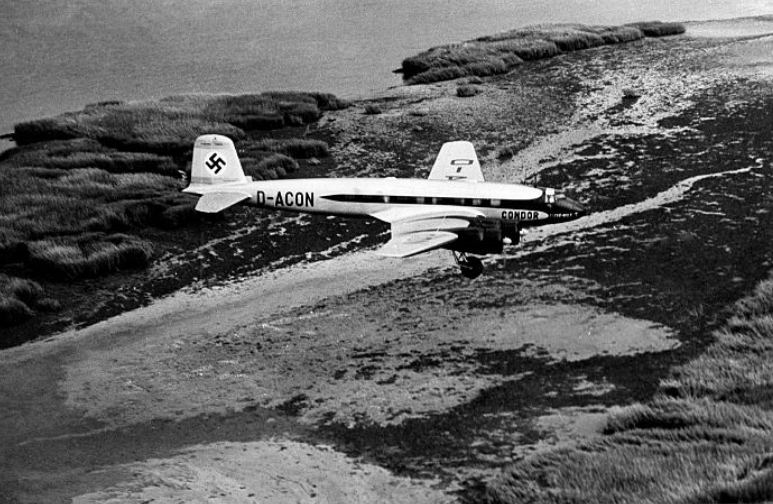
On 6 December 1938, while on approach to Manila, capital city of the Commonwealth of the Philippines, all four of D-ACON’s engines stopped. Unable to reach the airfield, the Condor was ditched in Manila Bay. All aboard were quickly rescued. The cause of the engines failing was fuel starvation. One source states that the crew had selected the wrong tanks. Another source says that a fuel line had broken. A third cites a fuel pump failure.
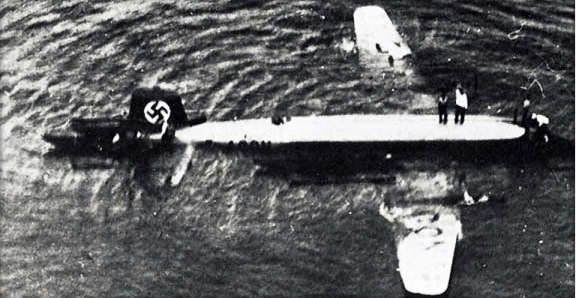
The wreck of the first Condor was recovered, however, the airplane was damaged beyond repair.
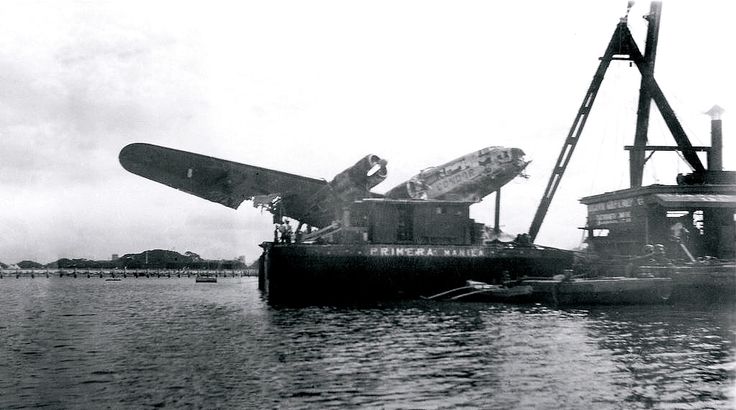
While the Focke-Wulf Fw 200 had been designed as a civilian airliner, it soon found use as a long-range maritime patrol bomber. The Fw 200 V10 was a military variant requested by the Imperial Japanese Navy. With the outbreak of World War II, Condors were produced as both bombers and transports. They saw extensive service searching for and attacking the Allies’ transatlantic convoys.
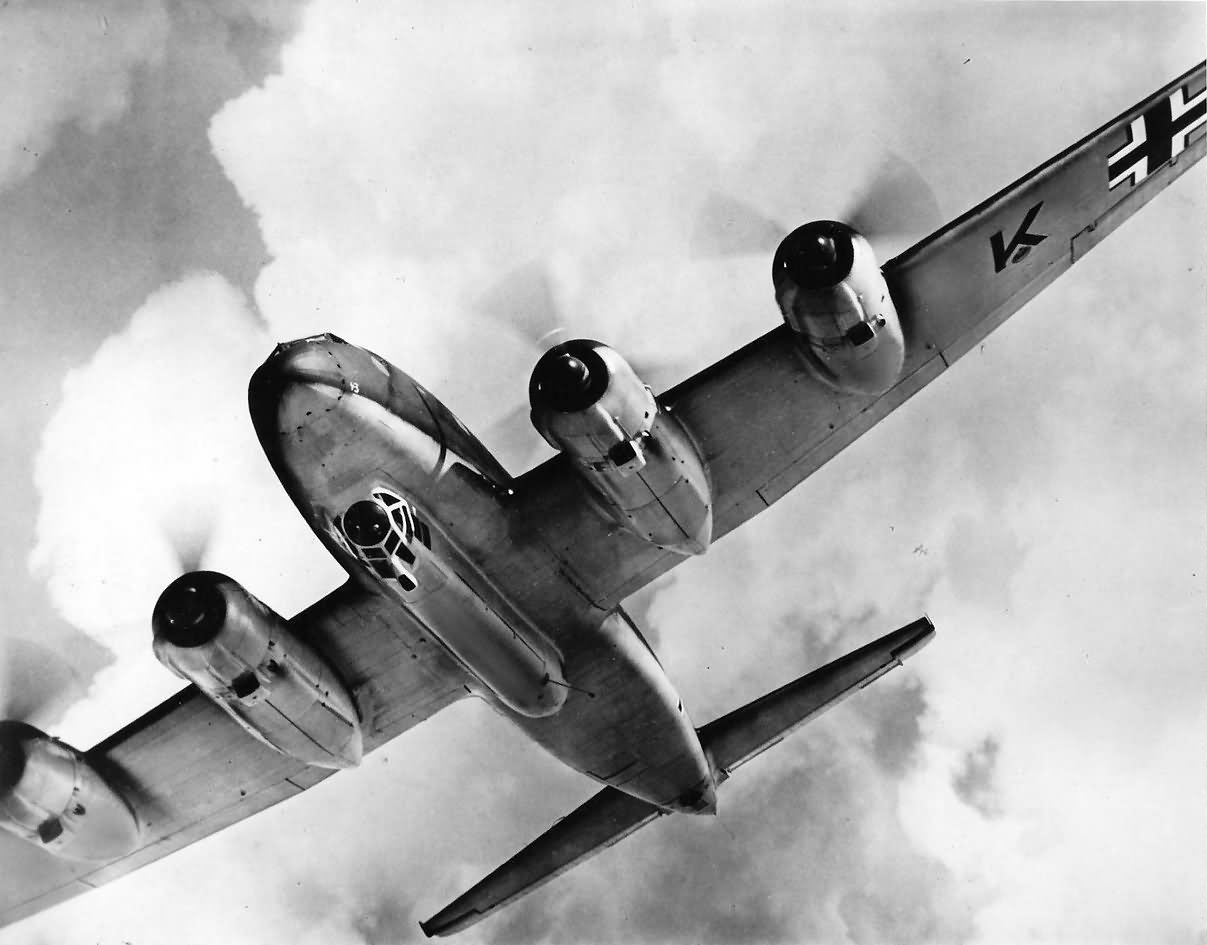
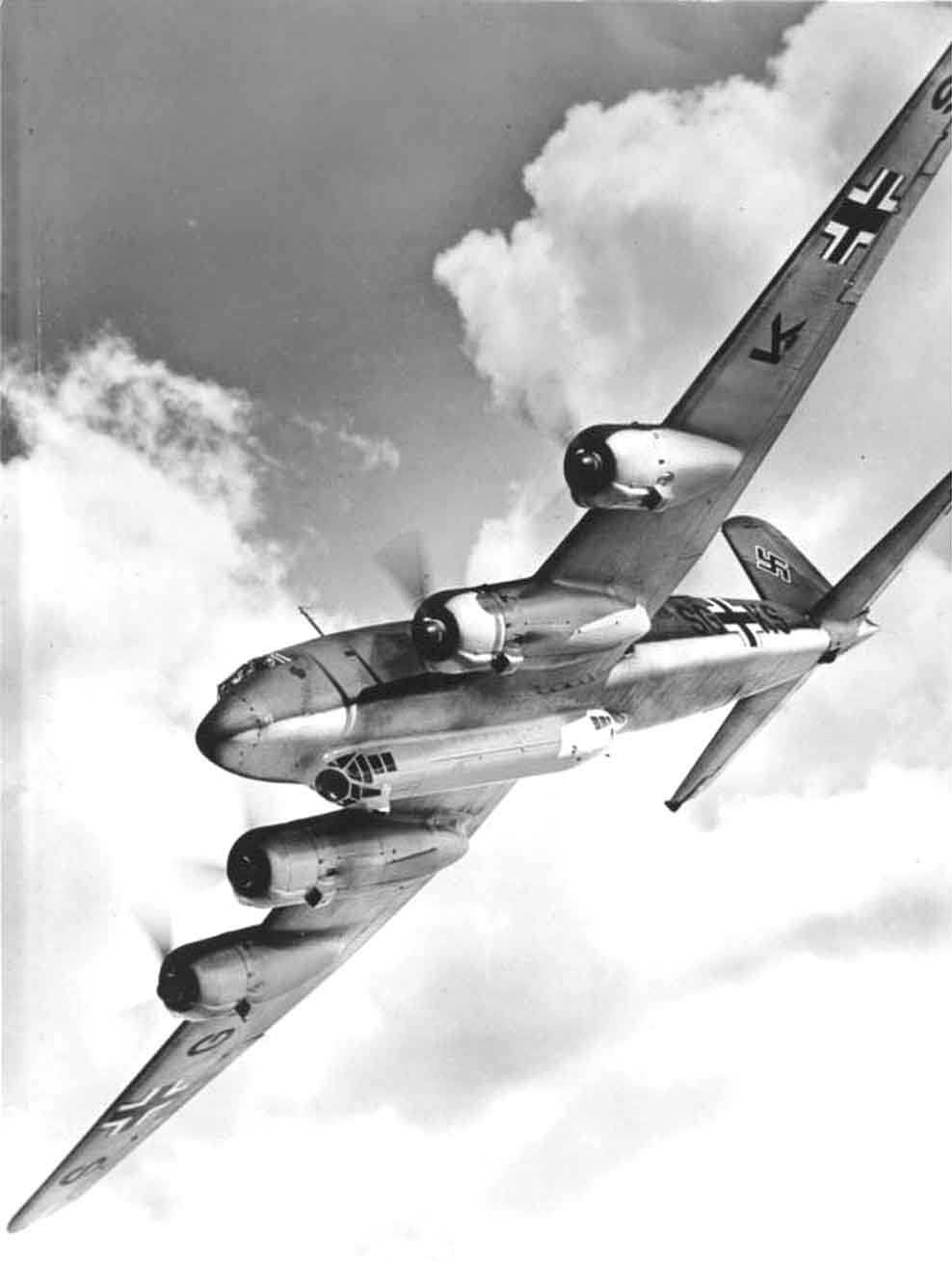
¹ FAI Record File Number 8984
© 2018, Bryan R. Swopes